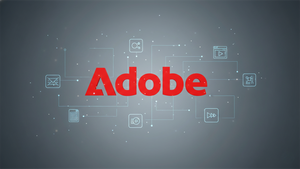The first of three reports on how organizations are rethinking business technology to drive innovation
— 93% of respondents are increasing their investments in technology
— 27% report that their technology is fully aligned with their business objectives
— 32% said their data needs work to support technology initiatives
— CRMs and customer interfaces were ranked as key areas of investment
— Integration challenges were noted as the leading obstacle
A new survey from Grant Thornton, one of America’s largest brands of professionals providing end-to-end audit, assurance, tax and advisory services, revealed that 93% of business leaders surveyed are investing more in technology.
Grant Thornton’s Digital Transformation Survey draws on insights from more than 550 cross-functional senior executives across industries, focusing on tech alignment, investment priorities, return on investment (ROI) metrics and integration challenges. The results revealed core shifts that are essential for transforming technology investments into sustained growth at a time when macroeconomic pressures — tariffs, weak consumer confidence and tech disruption — are creating obstacles to business growth.
“Robust data, experienced insights and practical alternatives illustrate how integrated, disciplined tech strategies drive measurable growth,” said David Koppy, principal in Business Consulting at Grant Thornton Advisors LLC.
Integration of tech and business strategy is crucial for growth
According to the survey, just 27% of respondents report that their technology is fully aligned with their business objectives.
“Business leaders recognize the need to invest in technology to enhance the customer experience, improve operations and drive profitability,” said Nick Vellani, national managing principal of Technology Modernization for Grant Thornton Advisors LLC. “But they are competing with their internal technology function's priorities. These may include infrastructure and application cloud migration, cybersecurity and data management — all of which are critical to ongoing operations but do not directly align to business priorities.”
The survey showed that 32% of respondents think their data needs work to support technology initiatives, with only 16% rating their data quality as “excellent.”
With the right systems and data in place, leaders need to connect those technology initiatives directly with business outcomes and customer experience improvements that lead to increased revenue.
Additionally, many companies are driving strong revenue growth at an affordable price by enhancing and optimizing their existing platforms instead of making large-scale new investments. By more than a 2-to-1 margin, survey respondents are planning add-ons or upgrades to existing systems rather than complete system overhauls.
Usage metrics clarify technology’s impact
Focusing on real-time technology usage analytics, rather than retrospective ROI, enables proactive growth. Many business leaders have recognized this; however, survey results show most still prioritize ROI metrics rather than tracking solution usage and adoption.
Usage metrics can quickly identify successful initiatives or signal necessary pivots, such as improved training. Metrics showing how often the team uses available application programing interfaces (APIs) surrounding an application can indicate how effectively the application is being deployed and identify opportunities for additional value creation. Performing an optimization analysis can help companies identify usage gaps with these tools.
Focusing exclusively on cost-based ROI metrics — without attention to usage-based metrics — can reduce the technology’s capabilities for improving quality and compliance.
For example, tax departments increasingly are relying on automation and AI to support critical tasks such as taxability determinations. By using the technology’s full capabilities, tax personnel maximize their ability to enhance reporting and improve the overall quality of the tax function’s work.
“AI also can contribute to strategy by analyzing tax positions to determine if alternative methodologies might create tax savings,” said Dana Lance, national tax solutions leader for Grant Thornton Advisors LLC. “Emerging technologies remove human time constraint from these tasks, ensuring no savings opportunities are overlooked and that reporting remains accurate and compliant.”
Customer needs drive strategic tech priorities
Following cybersecurity, customer relationship management (CRMs) and customer interfaces are the top technologies survey respondents will be investing in this year.
Organizations that center digital transformation around customer experience see clearer paths to revenue growth. With generative AI initiatives in particular, businesses initially implemented technology internally out of fear of exposing customers to potential AI-delivered mistakes that could harm brand reputation.
Now that they have developed guardrails around AI use, companies are using customer-facing AI platforms to satisfy customers — who are enjoying the personalization that AI provides.
Unified, data-driven platforms enable proactive decisions
Integration challenges remain the leading obstacle that our survey respondents expect to face with their technology.
Integrating technology into an interconnected ecosystem helps businesses maximize the impact of their investments. That’s why enterprise platforms such as enterprise resource planning (ERPs) and CRMs are among the top technologies that business leaders are targeting for investment this year.
However, businesses often struggle with insufficient integrations that lead to cross-functional handoffs and collaboration risks.
“When organizations successfully integrate CRMs, marketing automation, e-commerce and customer service platforms, they can create a 360-degree view of the customer with personalized interactions at every touchpoint,” said Vellani. “AI-powered insights can inform product development, inventory management and demand forecasting — aligning operational capabilities with customer expectations.”
He added that organizations can integrate these insights with ERP or other business solutions to drive decisions and actions.
To see additional findings from Grant Thornton’s Digital Transformation Survey, visit: https://www.grantthornton.com/insights/survey-reports/advisory/2025/shift-your-tech-strategy.
About Grant Thornton
Grant Thornton delivers professional services in the US through two specialized entities: Grant Thornton LLP, a licensed, certified public accounting (CPA) firm that provides audit and assurance services ― and Grant Thornton Advisors LLC (not a licensed CPA firm), which exclusively provides non-attest offerings, including tax and advisory services.
In January 2025, Grant Thornton formed a multinational, multidisciplinary platform with Grant Thornton Ireland. The platform offers a premier advisory and tax practice, as well as independent American and Irish audit practices. In April 2025, Grant Thornton UAE also joined the multinational platform. With $2.7 billion in revenues and almost 60 offices spanning the U.S., Ireland, the UAE and other territories, the platform delivers a singular client experience that includes enhanced solutions and capabilities, backed by powerful technologies and a roster of almost 13,000 quality-driven professionals enjoying exceptional career-growth opportunities and a distinctive cross-border culture.
Grant Thornton is part of the Grant Thornton International Limited network, which provides access to its member firms in more than 150 global markets.
Grant Thornton LLP, Grant Thornton Advisors LLC and their respective subsidiaries operate as an alternative practice structure (APS). The APS conforms with applicable laws, regulations and professional standards, including those from the American Institute of Certified Public Accountants.
“Grant Thornton” refers to the brand under which the member firms in the Grant Thornton International Ltd (GTIL) network provide services to their clients and/or refers to one or more member firms. Grant Thornton LLP and Grant Thornton Advisors LLC serve as the U.S. member firms of the GTIL network. GTIL and its member firms are not a worldwide partnership and all member firms are separate legal entities. Member firms deliver all services; GTIL does not provide services to clients.
View source version on businesswire.com: https://www.businesswire.com/news/home/20250623308190/en/
Contacts
Gina Mazzone
T +1 312 602 9096
E gina.mazzone@us.gt.com
S linkedin/grantthorntonus
twitter.com/grantthorntonus







